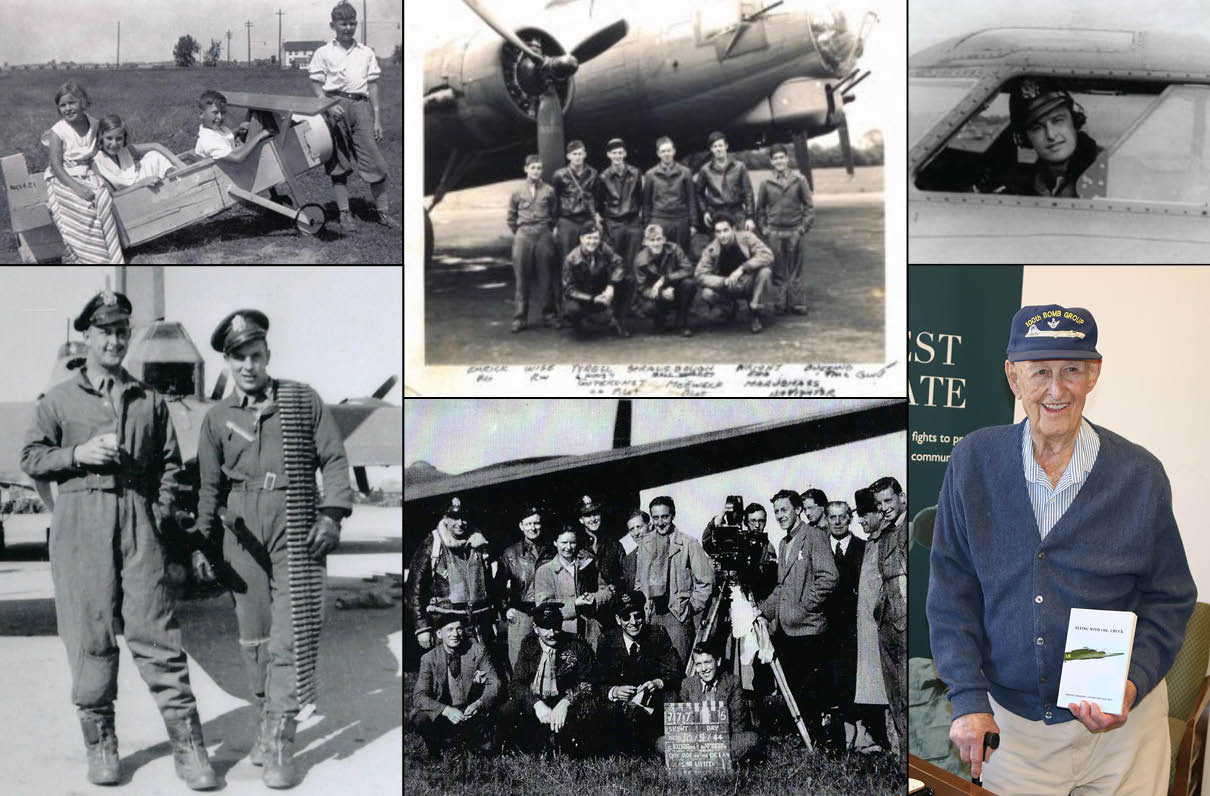The following will appear in the June issue of Military Officer magazine. The magazine is available to all MOAA Premium and Life members. Learn more and access the digital edition here; learn more about joining MOAA here.)
From his very first parachute test mission – that is, harnessing a neighborhood stray cat to one of his mom’s old cotton bedsheets and tossing it over a grassy patch – a young Chuck Gutekunst knew he was destined to pursue a career in aviation.
The test mission quickly ended when a concerned neighbor alerted his mom, but Gutekunst’s fascination evolved into building model aircraft so impressive they won Automobile and Transportation shows. Gutekunst, who eventually retired from the Air Force as a colonel in 1973 after 31 years of service, settled into the cockpit of B-17 heavy bombers during World War II.
After the attack on Pearl Harbor and a rejection from the Navy, Gutekunst elected to take the Army Air Corps aviation cadet exam. It took him six hours, but his score topped the other 18 candidates who applied that day.
“I left the room feeling like I had just climbed Mt. Everest,” Gutekunst recalled, from his memoirs in Flying With Col. Chuck. Gutekunst, who recently turned 101 years old, is a member of the Catalina Mountains Satellite Chapter of Tucson MOAA.
“That is when my aviation career really began. That test turned me into an aviation cadet for the United States Army Air Corps.”
As he conducted advanced flight training in Arizona, he was diagnosed with “Valley Fever”, which is caused when breathing in spores from the desert dust that depleted oxygen levels. Gutekunst was on bed rest when his class graduated without him and left for Italy.
[RELATED: Meet the Army Lieutenant Racing to Develop a Coronavirus Vaccine]
Finally, he graduated with the following class and was assigned as a pilot to a B-17 with the 100th Bomb Group. It wasn’t his first choice, but German fighter pilots were shooting down B-17s every day and Gutekunst said “there was hell to pay.”
On his first mission, Gutekunst was selected as the tail gunner because he understood how B-17 formations were supposed to look and could spot anything out of the ordinary. He crawled through the plane’s passageway into the tail gun position, cocking the gun and ready to fire.
Once the formation passed over the French coast into enemy territory, Gutekunst spotted three German 109 Messerschmitts flying behind, shooting at the American aircraft. He shot one in the belly and watched it fall.
“I cocked my guns and started to the hose the fire in the general direction of the three Germans,” Gutekunst said, in his book. “At that time, for me, things went from excitement to calm. I had been too excited to be afraid. I was too busy to be anything but exhilarated by what had just happened.”
Among other enemy targets, the bomb group sought to destroy the oil refineries that kept German aircraft in the skies and the tanks moving on the ground.
[RELATED: MOAA Board Member: COVID-19 Pandemic Makes Chinese Medication Stronghold ‘Even More Frightening’]
“We knew we were doing a lot when we bombed oil refineries because that would prevent them from moving,” Gutekunst said. “Another thing we bombed was aircraft factories. I remembered we had a long mission to Munich from England and we bombed aircraft factories and aircraft engine factories.”
His career came to an interesting end. After he finished his 34th mission, his commander told him he could fly one more mission to complete the required 35 and go home, or he could take on a weeks-long project flying a B-17 for an upcoming Hollywood movie with a few other pilots. Wanting to relieve the risk of being shot down on his final mission, Gutekunst took up the weeks-long project.
The men flew B-17s in This Side of the Ocean, a film about an American bomber group moving onto an RAF base and bombing Germany. Gutekunst also made a cameo as an aide during a change of command ceremony in the film.
Once they completed their flying roles, Gutekunst and the other men returned to the 100th Bomb Group to begin clearing the base to return to the United States. He spent about a month visiting his parents at his childhood home in Philadelphia before driving to the west coast for the Army Flight Instructors School.
“I looked to see if This Side of the Ocean was playing in Tucson, but no luck,” Gutekunst said, in his book. “It was probably still showing in England. The war with Germany was over, the war with Japan was gaining momentum, and the Army training effort was winding down.”



